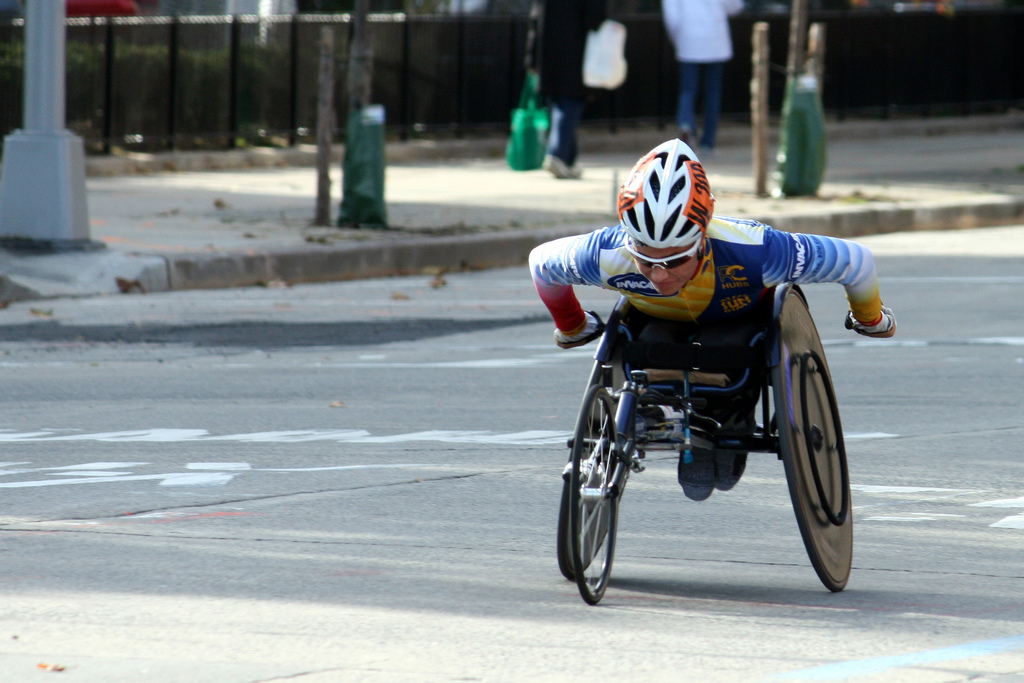 NEWS
NEWS
 NEWS
NEWS
 NEWS
NEWS
This week’s Smart Health roundup features a new fitness tracker for swimmers, a study that reveals how digital health devices reduce the government’s healthcare spending, another watch maker that joins the wearables bandwagon, the first fitness tracker for wheelchairs and new data that paints a grim future for fitness trackers.
![]() Misfit, Inc., makers of the fitness tracker Shine, has introduced a new version of the tracker that is directed at swimmers. Called the Speedo Shine, the tracker was created in collaboration with Speedo International, Ltd., which is known for manufacturing and distributing swim gear.
Misfit, Inc., makers of the fitness tracker Shine, has introduced a new version of the tracker that is directed at swimmers. Called the Speedo Shine, the tracker was created in collaboration with Speedo International, Ltd., which is known for manufacturing and distributing swim gear.
The Speedo Shine is a fitness, swim and sleep tracker all rolled into one nifty device. It is made out of durable aircraft-grade aluminum and is waterproof to up to 50 meters, just like the original Misfit Shine. But what sets it apart is that its performance is validated by Speedo’s Aqualab testing to ensure that it accurately counts a swimmer’s lap and swim distance no matter what stroke is being performed.
Speedo Shine will soon be available at Misfit.com, SpeedoUSA.com and all Apple Stores for $79.99. And it will come in a new Pure color.
Accenture plc. released a new study that sheds light as to how digital health devices are helping the government shave off billions in medical spending. The study stated that the U.S. could save over $100 billion in the next four years if more FDA-regulated connected devices and software are adopted by the masses. Last year alone, the U.S. saw savings of about $6 billion thanks to these Internet-connected devices.
The use of wearable devices that support health and fitness monitoring is also expected to increase to 43 percent in the next five years, and we could see healthcare savings of up to $50 billion by 2018.
Accenture is convinced that continued adoption of these medical-grade devices will not only lead to better healthcare for patients, but also decreased government spending on healthcare in the foreseeable future.
![]() During the Intel Developer Forum 2015, watchmaker Fossil, Inc. took the stage to show off its connected wearable devices. Set for a holiday release, Fossil provided a quick peek for its connected bracelets for males and females, a connected watch and a smartwatch running Android Wear.
During the Intel Developer Forum 2015, watchmaker Fossil, Inc. took the stage to show off its connected wearable devices. Set for a holiday release, Fossil provided a quick peek for its connected bracelets for males and females, a connected watch and a smartwatch running Android Wear.
Not much was shared about these wearable devices, but the smartwatch looks stunning and also features the black bar at the bottom of the screen, much like the Moto 360. The smartwatch may have health or fitness tracking features, as evidenced by the displayed step counter, and will have voice control features.
Accenture plc.-owned Chaotic Moon Studios has come up with a fitness tracker for people who use wheelchairs. The device, called Freewheel, attaches to a wheelchair and is able to measure speed, acceleration, distance, altitude, incline and decline thanks to sensors on board, such as Hall effect sensors, a barometer, gyroscope and an accelerometer. The data gathered by Freewheel is sent to a smartphone or smartwatch via Bluetooth LE, and the data can be combined with other data, such as heart rate, gathered by a smartwatch.
The idea for Freewheel came from Chaotic Moon’s content strategist Tyler Hively, who uses a wheelchair himself. Hively brought the idea to Chaotic Moon’s BASE innovation team. The device is currently a prototype, and finishing touches will be put in place over the next few months. No word yet as to when the device will be released.
A survey conducted by Robert W. Baird & Co. revealed that consumer interest in purchasing a fitness tracker is high, with 9.5 percent of respondents stating that a Fitbit is their top choice. The survey also revealed that 22 percent of U.S. consumers now own a fitness tracker and 9.7 percent of them own a Fitbit, a larger percentage compared to other trackers.
Though interest is high, the survey also revealed that 28 percent of all Fitbit users tend to stop using the device over time, and for those who have owned their Fitbit for 24 months or even longer, that number rises to 48 percent.
This survey aligns with Argus Insight, Inc.’s report earlier this year that while Fitbit was the top choice for fitness enthusiasts, its hold on the market was slipping. One of the reasons fitness trackers may be on the brink of extinction is because of the rise in interest in smartwatches. Although more expensive, smartwatches provide various functions for users aside from fitness tracking. It also doesn’t help that consumers are not too keen on charging fitness trackers almost every day.
Support our mission to keep content open and free by engaging with theCUBE community. Join theCUBE’s Alumni Trust Network, where technology leaders connect, share intelligence and create opportunities.
Founded by tech visionaries John Furrier and Dave Vellante, SiliconANGLE Media has built a dynamic ecosystem of industry-leading digital media brands that reach 15+ million elite tech professionals. Our new proprietary theCUBE AI Video Cloud is breaking ground in audience interaction, leveraging theCUBEai.com neural network to help technology companies make data-driven decisions and stay at the forefront of industry conversations.